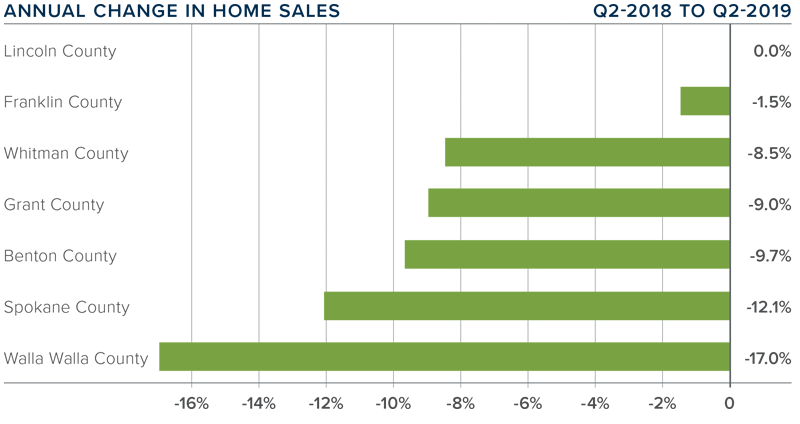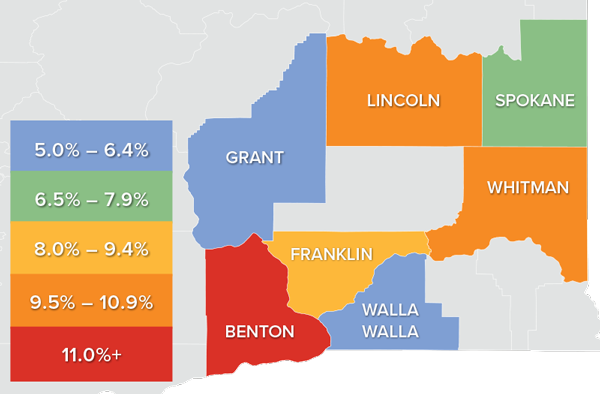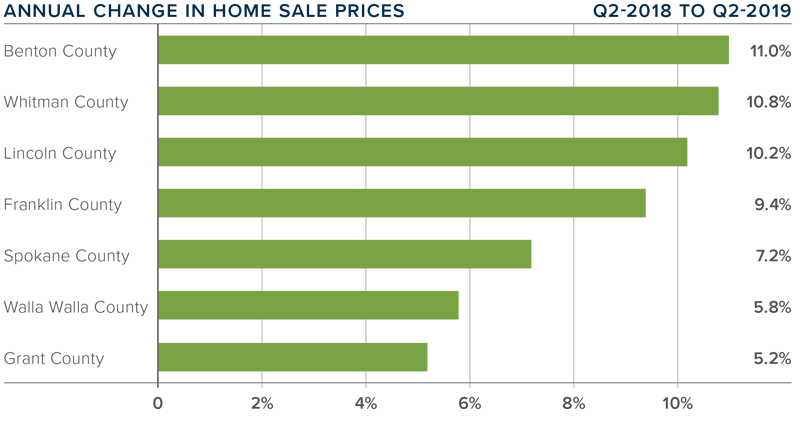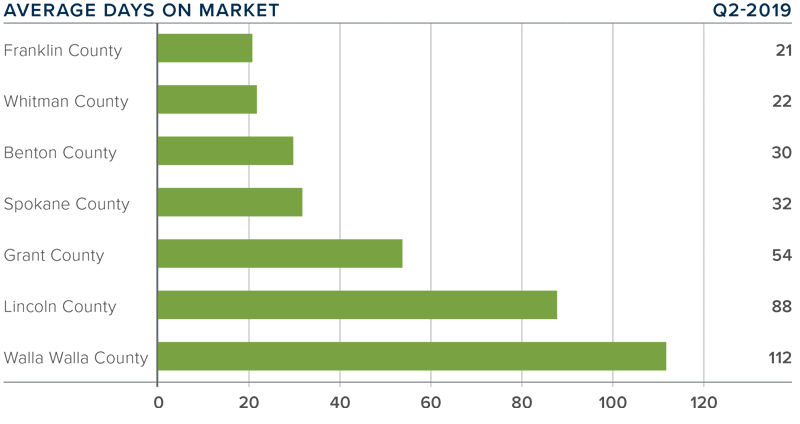The following analysis of the Eastern Washington real estate market is provided by Windermere Real Estate Chief Economist Matthew Gardner. We hope that this information may assist you with making better-informed real estate decisions. For further information about the housing market in your area, please don’t hesitate to contact your Windermere agent.
ECONOMIC OVERVIEW
Washington State employment jumped back up to an annual growth rate of 2.4% following a disappointing slowdown earlier in the spring. As stated in the first quarter Gardner Report, the dismal numbers earlier in the year were a function of the state re-benchmarking its data (which they do annually). The state unemployment rate was 4.7%, marginally up from 4.5% a year ago. My current economic forecast suggests that statewide job growth in 2019 will rise by 2.6%, with a total of 87,500 new jobs created. Eastern Washington added 18,143 total jobs over the past 12 months, representing an annual growth rate of 3.9%. Even with decent job formation, the unemployment rate rose to 5% from 4.8% a year ago.
HOME SALES
- Home sales throughout Eastern Washington were down 11% compared to the same quarter in 2018, for a total of 3,468 closed sales.
- Pending home sales were lower year-over-year but were up by 4.1% over the first quarter, suggesting that third-quarter closings should be higher.
- Year-over-year, home sales fell in all counties other than Lincoln, which saw no change. The greatest drops were in Walla Walla and Spokane counties.
- Interestingly, the number of homes for sale was 7.5% lower than a year ago, which is somewhat counterintuitive as most western markets have seen the number of homes for sale rise over the past several months. I do not believe this will be a trend that will continue. If it does, we will likely see further upward price pressure as the market remains tight.

HOME PRICES
- Year-over-year, the average home price in Eastern Washington rose by a significant 8% to $293,767. Price growth remains remarkably robust.
- Low inventory levels continue to be the most significant hurdle to many home buyers. As previously discussed, the number of homes for sale remains low and this continues to put upward pressure on prices.
- Prices rose in all of the counties contained in this report. Benton, Whitman, and Lincoln counties showed double-digit gains.
- The takeaway is that average home-price growth in Eastern Washington remains well above the long-term average.

DAYS ON MARKET
- The average time it took to sell a home in Eastern Washington in the second quarter of 2019 was 51 days.
- The average amount of time it took to sell a home dropped by four days compared to the second quarter of 2018.
- Every county other than Franklin and Benton (which both rose by three days) saw the time it took to sell a home drop compared to the same quarter in 2018.
- It took sixteen fewer days to sell a home in the second quarter than it did in the first quarter of this year.

CONCLUSIONS
 This speedometer reflects the state of the region’s real estate market using housing inventory, price gains, home sales, interest rates, and larger economic factors.
This speedometer reflects the state of the region’s real estate market using housing inventory, price gains, home sales, interest rates, and larger economic factors.
The number of homes for sale remains well below normal levels, causing housing markets throughout Eastern Washington to remain very tight. It’s worth noting that concerns about affordability can cause buyer demand to decrease, which eventually functions to slow home price growth, but that has yet to occur. As such, I am leaving the needle in the same position as last quarter.
ABOUT MATTHEW GARDNER
 As Chief Economist for Windermere Real Estate, Matthew Gardner is responsible for analyzing and interpreting economic data and its impact on the real estate market on both a local and national level. Matthew has over 30 years of professional experience both in the U.S. and U.K.
As Chief Economist for Windermere Real Estate, Matthew Gardner is responsible for analyzing and interpreting economic data and its impact on the real estate market on both a local and national level. Matthew has over 30 years of professional experience both in the U.S. and U.K.
In addition to his day-to-day responsibilities, Matthew sits on the Washington State Governors Council of Economic Advisors; chairs the Board of Trustees at the Washington Center for Real Estate Research at the University of Washington; and is an Advisory Board Member at the Runstad Center for Real Estate Studies at the University of Washington where he also lectures in real estate economics.
 Facebook
Facebook
 X
X
 Pinterest
Pinterest
 Copy Link
Copy Link



